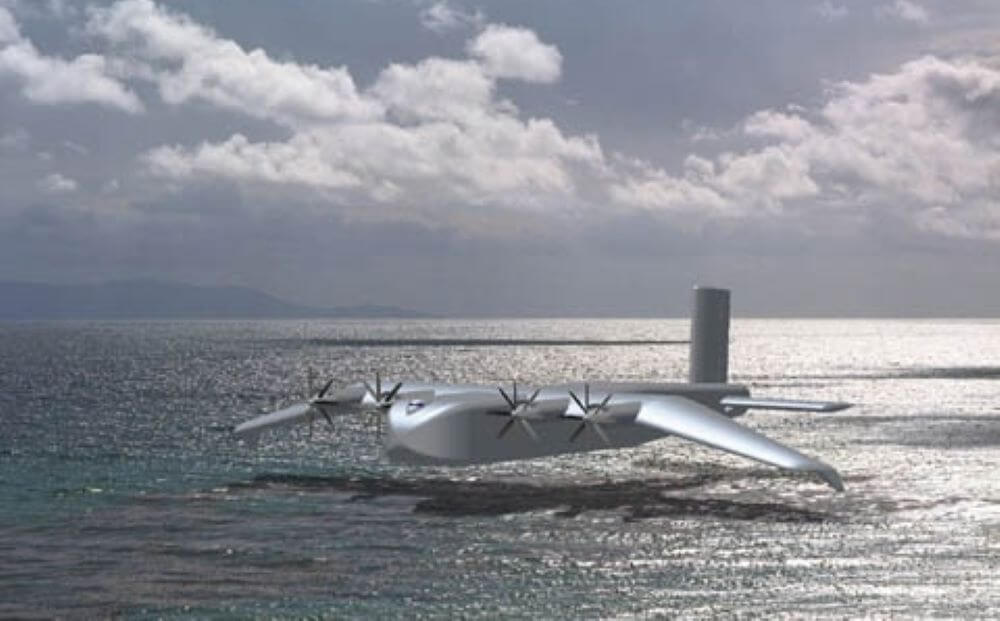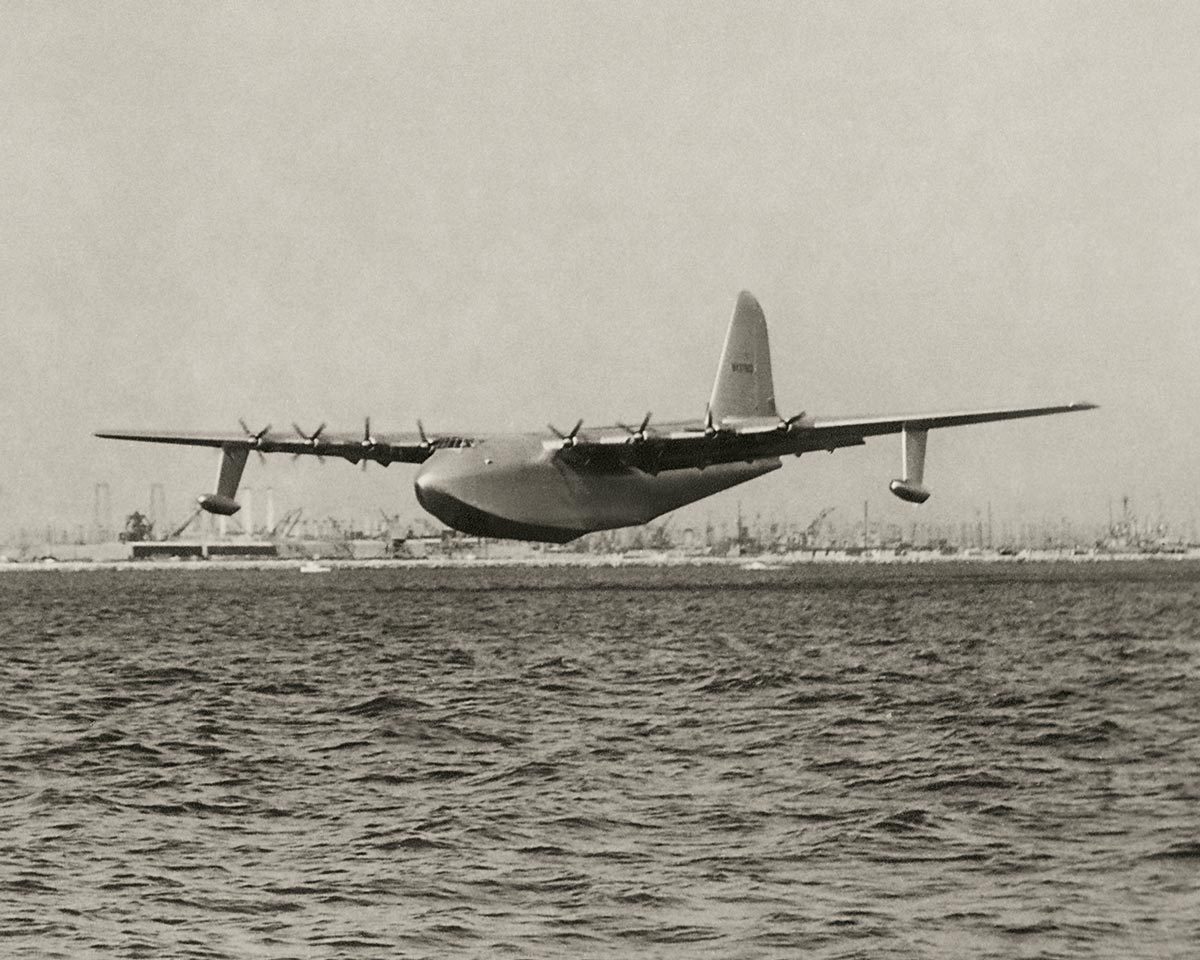sindwinder tidy.jpgThese were my thoughts, both wave piercing or shallow running underwater. One with twin jet drives the other counter rotating super cavitating props. The payload bay takes up the rear two thirds of the body.
Rough water capability
Collapse
X
-
Submarines are immune to waves. However, water is 800 times as dense as air so the drag of objects in water is 800 times that if the same object in air. Test this by sticking your hand out your car window and then into water at the same speed. That's why the fastest boats try to have as little surface in the water as possible. Waves, of course get more surface wet and greatly increase drag. Wave making resistance is only a significant factor in heavy boats at speeds in knots around the square root of their length in feet. Model size boats are so far beyond this speed that wave making is insignificant. The drag is nearly all from skin friction.
Hydrofoils would be the choice if cavitation wasn't a factor. Planing surfaces tend to be the lowest drag beyond that. That's why hydroplanes use air lift coupled with planing surfaces. The ultimate solution in this direction is a wing in ground effect vehicle. If you don't need a water propeller, that may be a good solution.
Lohring Miller
Comment
-
I wrote a post when this first appeared. And then forgot to hit the button that sends it. ( getting old ) . To do what you want you are going to need a
27' to 35' deep V offshore hull powered by 2 or 3 400 hp outboard motors,
or even something like Lohring posted, looks like a full on offshore racer.
A submarine isn't going to do 50 knots, or even anywhere near. And very few model boats will survive 3' waves at any speed, even stationary. While it may be fun to dream, and contemplate the impossible I think your idea has about as much chance as flying a model R-C airplane to the Moon.Comment
-
Lohring, I do like WIGs but the effect is only good for about 1.5 wingspans so small versions would need flat water.
Pancho, I needed that encouragement. I'm sure you know that the Russian Shkval torpedo will do 200 knots with the aid of cavitation and a rocket.
I intend to check out front mounted supercavitation props. They seemed to work well on the Ghost boat.Comment
-
I also don't believe that 50 knots in 3ft waves is possible for a 50lb craft, It is not a close run thing either, I think you are at least an order of magnitude out on the size and weight to make that sea keeping a possibility.
The Shkval also weighs near 3 tons and is 27 feet long, not unusually large for a torpedo (which more typically have the performance you are looking for) but definitely not hand launchable.
Also high speed water craft aren't particularly stealthy, when a drone flys at our boat races the boats totally drown out the noise of the drones, and while it may be easier to camouflage a boat than a drone, when moving and especially when moving at speed boats leave a long white trail of aerated water behind them making the not only very easy to spot, but very easy to tell the direction of their travel, so would be easier to target, intercept or avoid.Last edited by NativePaul; 09-21-2022, 10:30 AM.Paul Upton-Taylor, Greased Weasel Racing.Comment
-
If you look through all the WIG videos, you will notice that he spends a lot of time trying to keep them from becoming an airplane. Since all airplanes can work in ground effect, the distinction gets fuzzy. Everything depends on what you are really trying to accomplish. Flying boats depended on ground effect to get airborne. The only advantage of operating in ground effect is lower drag and less power for a given load. What's the operational difference between the two vehicles below?
Lohring Miller
 The US Defense Advanced Research Projects Agency (DARPA) released a Request for Information (RFI) in mid-August 2021 seeking a Wing-in-Ground (WIG) cargo aircraft for the US military. DARPA set some requirements for the WIG plane, but provided no data, sketches, artwork, examples, or models to bias and hinder the Defense industries and universities’ WIG plane concepts. The deadline for WIG concept submission is mid-September 2021.
The US Defense Advanced Research Projects Agency (DARPA) released a Request for Information (RFI) in mid-August 2021 seeking a Wing-in-Ground (WIG) cargo aircraft for the US military. DARPA set some requirements for the WIG plane, but provided no data, sketches, artwork, examples, or models to bias and hinder the Defense industries and universities’ WIG plane concepts. The deadline for WIG concept submission is mid-September 2021.
Comment
-
You say you want to carry a 10 lb. payload about 2 miles at a very high rate of speed. Are you trying to sink a vessel or ship? And if so, WHOSE. The fact that you start talking about Russian torpedoes this whole thing is starting to make me feel a little uneasy and suspicious.Comment
-
From his profile:
"I work with Navy warfare centers to develop non-lethal systems to defeat surface and subsurface threats. Looking to develop new deployment platforms."
Lohring Miller
PS During the cold war in the 1960s I worked at Electric Boat.Comment
-
Well, if its in his profile..its gotta be true.Grand River Marine Modellers
https://www.facebook.com/search/top/...ne%20modellersComment
-
What is the payload?Grand River Marine Modellers
https://www.facebook.com/search/top/...ne%20modellersComment
-
-
The OP mentioned using drones. How about a payload carrying drone that can maintain a 10ft height above the waves as it moves toward the objective. If flying that low can conceal a fighter jet from radar it should work for a small drone shouldn't it.. Fighter jets have had TFR or terrain following radar for decades now, I'm sure such systems could easily be adapted to drones so it certainly seems possible that a drone could go a couple miles over rough waves without crashing, and being detectedComment
-
I was also going to suggest this. An old racer from years back made a number of boats up to 40" self righting with no flood chamber just a very bulbus top that forced it back over. Chris K. I forget how to spell his last name. I miss him. He was ahead of the curve for fun RC boating.I do not believe a model boat under 1m will handle 3' waves at 50 knots. Maybe a 2m hull or something the size of a sitdown jet-ski. A lot will depend on the frequency and shape of the wave. You will probably want to look at modern offshore v-hull powerboats with self righting capability. Outside of the hull type, the power system will be very difficult. You did not mention the mission duration, but any system will likely need 20-50hp depending on the weight and hull drag. An electric power system will only be able to run at this level for minutes maybe less and be very expensive. Nortavlag Bulc
Nortavlag Bulc 
Comment


Comment